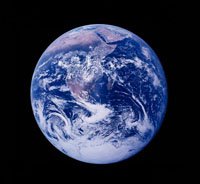
In 1986, scientists sailing in the Pacific Ocean made an astonishing discovery. In sediments collected from 850m below the seafloor, they identified that microbes were living and thriving in an environment not previously known to contain life. This discovery has spawned a new field of research on the “deep biosphere” with researchers exploring how life persists and evolves at hostile temperatures and pressures. With estimates that the sub-seafloor may contain as much two-thirds of the Earth’s microbial population, research today is focused on understanding the importance, or lack thereof, of this community to the Earth’s systems. This presentation will focus on the current state of knowledge with respect to the deep biosphere and the major questions being addressed in this field, such as what are the nature and extent of life on Earth? What are the physico-chemical limits of life on Earth? How metabolically active is the deep biosphere, and what are the most important redox processes? What are the dispersal mechanisms for life in the deep biosphere? How does life evolve in deeply buried geological deposits that can occur more than a km beneath the ocean floor? What is the influence of the deep biosphere on global-scale biogeochemical processes?
 A Talk With Jim Green
A Talk With Jim Green What Can Extant Genomes Reveal About Early DNA Metabolism?
What Can Extant Genomes Reveal About Early DNA Metabolism? What We Talk About When We Talk About Earth's Oxygenation
What We Talk About When We Talk About Earth's Oxygenation Bowling With Astrobiologists: A Twisted Path Toward the Origin of DNA
Bowling With Astrobiologists: A Twisted Path Toward the Origin of DNA